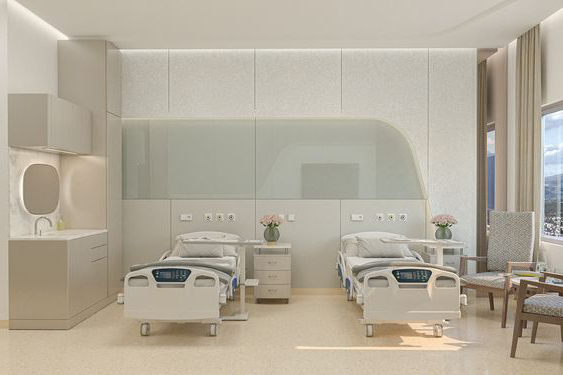Views: 0 Author: Site Editor Publish Time: 2024-05-07 Origin: Site








Infection control is a top priority in healthcare facilities, where preventing the spread of disease is critical to the well-being of patients and staff. While meticulous cleaning and disinfection protocols are essential, the role of healthcare furniture selection in infection control efforts should not be underestimated. In this article, we'll look at the importance of choosing furniture materials and designs that are easy to clean and disinfect, thereby contributing to effective infection control in patient nursing room.

The Significance of Furniture Materials
The materials used in healthcare furniture can have a significant impact on its cleanability and resistance to pathogens. Porous materials, such as fabric upholstery and untreated wood, can absorb liquids and harbor bacteria, making thorough cleaning and disinfection a challenge. In contrast, non-porous materials such as vinyl, polyurethane, and plastic create smooth surfaces that can be easily wiped down and effectively disinfected. When selecting furniture for patient rooms, prioritize items made of non-porous materials to minimize the risk of cross-contamination and the spread of infection.
Design Considerations for Infection Control
In addition to materials, the design of healthcare furniture plays a critical role in infection control efforts. Furniture with intricate details, seams and crevices can provide hiding places for pathogens and make thorough cleaning difficult. Seamless or minimalist designs are preferred for patient rooms because they minimize areas where bacteria can accumulate. Chairs, tables and other furniture with smooth surfaces and simple designs are easier to thoroughly clean and disinfect, reducing the risk of infection transmission.
Antimicrobial Properties
Some healthcare furniture is equipped with antimicrobial properties that inhibit the growth of bacteria and other microorganisms. These antimicrobial additives can be integrated into the materials during manufacturing, providing an extra layer of protection against infection spread. While not a substitute for regular cleaning and disinfection, furniture with antimicrobial properties can help mitigate the risk of contamination between cleaning cycles. When choosing furniture for nursing rooms, consider options with built-in antimicrobial features for added infection control benefits.
Ease of Cleaning and Disinfection
Above all, healthcare furniture should be designed to be easy to clean and disinfect. Furniture with smooth, non-porous surfaces can be quickly wiped down with disinfectant wipes or solutions, saving time and effort for healthcare workers. Removable, machine-washable cushions or covers further facilitate thorough cleaning. When furnishing patient rooms, prioritize items that are easy to clean and disinfect to maintain a hygienic environment and minimize the risk of infection transmission.
Best Practices for Furniture Selection
When selecting furniture for nursing rooms to support infection control efforts, consider the following best practices:
1. Choose non-porous materials such as vinyl, polyurethane, or plastic.
2. Opt for seamless or minimalistic designs to minimize areas where bacteria can accumulate.
3. Look for furniture with built-in antimicrobial properties for added infection control benefits.
4. Prioritize items that are easy to clean and disinfect, such as those with smooth surfaces and removable covers.
By adhering to these best practices, healthcare facilities can select furniture that contributes to effective infection control in nursing rooms, ultimately promoting the health and safety of patients and staff alike.
Conclusion
Infection control in nursing room is a multifaceted endeavor, and the selection of healthcare furniture plays a critical role in preventing the spread of disease. By choosing materials and designs that are easy to clean and disinfect, healthcare facilities can create a safer environment for everyone. Non-porous materials, seamless designs, antimicrobial properties, and ease of cleaning should be key considerations when furnishing patient rooms. Ultimately, investing in infection control through thoughtful furniture selection is an investment in the health and well-being of everyone in the healthcare environment.